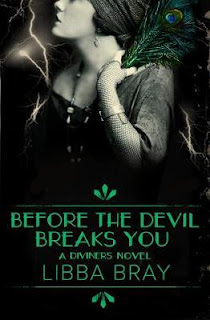The hike through the rugged Giralang Ranges is meant to take the office colleagues out of their air-conditioned comfort zone and teach resilience and team building. At least that is what the corporate retreat website advertises. Federal Police Agent Aaron Falk has a particularly keen interest in the whereabouts of the missing bushwalker.
Alice Russell is the whistleblower in his latest case - in just a matter of days she was to provide the documents that will bring down the company she works for.
Falk discovers that far from the hike encouraging teamwork, the women tell a tale of suspicion, violence and disintegrating trust. But does it include murder?
In this book we get to know more about Agent Aaron Falk, a member of the financial crime division of the federal police. Like its predecessor, Force of Nature is at its core a 'police procedural' novel. But far from the constraints of the suburbs where a murder or missing person case can be solved with the aid of CCTV footage, or even the gossip from those in a rural town, out here in the fictional Giralang Ranges it becomes clear that the mystery behind Alice's disappearance will be more difficult to uncover. It's this added complexity of the rugged setting where the group of women begrudgingly set out on a company team-building expedition that brings the drama to the fore.
Later, the four remaining women could fully agree on only two things. One: No-one saw the bushland swallow up Alice Russel. And two: Alice had a mean streak so sharp it could cut you.
Once again Jane Harper has excelled in conveying the essence of a sense of place. In the Australian bush she brings out the ghostly whispers of the trees and unsettling sounds of the wildlife with vivid clarity. Just as the women struggle to orient themselves in an unfamiliar environment which all begins to look the same, us readers are also led on a twisted path to the truth. Harper skilfully leaves crumbs along the way which ramp up the suspense and enormity of the situation where survival becomes paramount - from the discovery of a meagre pool of water to what could be the abandoned cabin of an infamous killer. What is only a few days of the doomed expedition stretches the entire length of the story thanks to the alternating perspective on the current investigation at hand. Each chapter ends on a 'mini-cliffhanger', a device which achieves exactly what it set out to do - make this a book you Can't. Put. Down.
There was a movement outside her sleeping bag and Beth stiffened. She couldn't tell what had made it - woman or wildlife. She lay still and by the time it disappeared, the word she'd been searching for had formed on the tip of her tongue, so real she could almost taste its residue. Feral.
The characters are equally well-developed, where human nature is examined as people are pushed to the brink. The boiling pot of personalities, from Alice the self-assured narcissist to Bree and Beth who are sisters that could not be more different, morphs into a powder keg ready to explode. These tensions make the plot all the more compelling, brought together with taut prose that is matter-of-fact yet descriptive. When there's no telling if help is ever going to arrive, ethics are questioned as company politics transcend the office, becoming a different beast altogether. It would be easy for a story like this to turn into a merely pragmatic play-by-play of the events as they unfolded, but I liked how there was more heart to the investigation. Falk's connection to his father who also used to hike the trails in the ranges was an interesting touch, bringing some humanity back to a plot which otherwise highlights its vices through characters that are teetering over the edge.
FINAL THOUGHTS
If you've enjoyed The Dry, you will LOVE Force of Nature. Nonetheless, this book should be recognised for its own well-deserved merits. Jane Harper isn't just an author to watch, she's one whose work has to be read - do that and you won't look back.



























